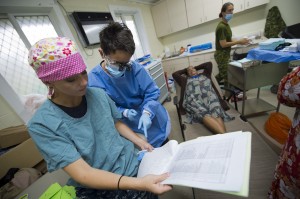Like most Americans, you probably believe:
- What you tell your doctor is totally private
- If you sign “privacy notices” at a doctor’s office, a pharmacy, a hospital, or a lab, your health records will not be used or disclosed without your permission
- No one can look at your sensitive health records, prescriptions, or tests without your permission
None of these assumptions are true.
 Who Can See and Use your Health Records?
Who Can See and Use your Health Records?
Over 4 million businesses including:
- Employers
- Government agencies
- Insurance companies
- Billing firms
- Pharmaceutical companies
- Pharmacy benefits managers
- Marketing firms
- Data miners
See a sample chart here.
FACT: Patient consent is no longer required to share health records, no matter how embarrassing or intensely personal the contents may be. While your doctor may wish to protect your information, once the records are sent out of their offices, they can no longer control who can see or use your information.
Chilling News About Health Privacy:
You Have None.
Is there anything in your health record that you would not want to share with others? Prescriptions for anti-depressants, anxiety, cancer, long-ago abortions, AIDS or HIV, testing for the Alzheimer gene, your child’s Autism or ADD, sexual impotency prescriptions, hospital admissions, or anything else?
You assume your most personal health information is private, right? It’s not.
What about Electronic Health Records?
Electronic health records are supposed to be progressive, save lives and money — how can PPR be against progress?
We’re not. In fact, privacy is the key to progress with Health Information Technology (HIT). The potential benefits of electronic health systems cannot be realized unless Americans have confidence that ironclad privacy protections are in place for online health records, databases, and networks. As Americans realize how open their records actually are, they will avoid treatment and be much more selective about important information they share with their doctors. Patient Privacy Rights applauds the smart use of technology in medicine and the healthcare industry.